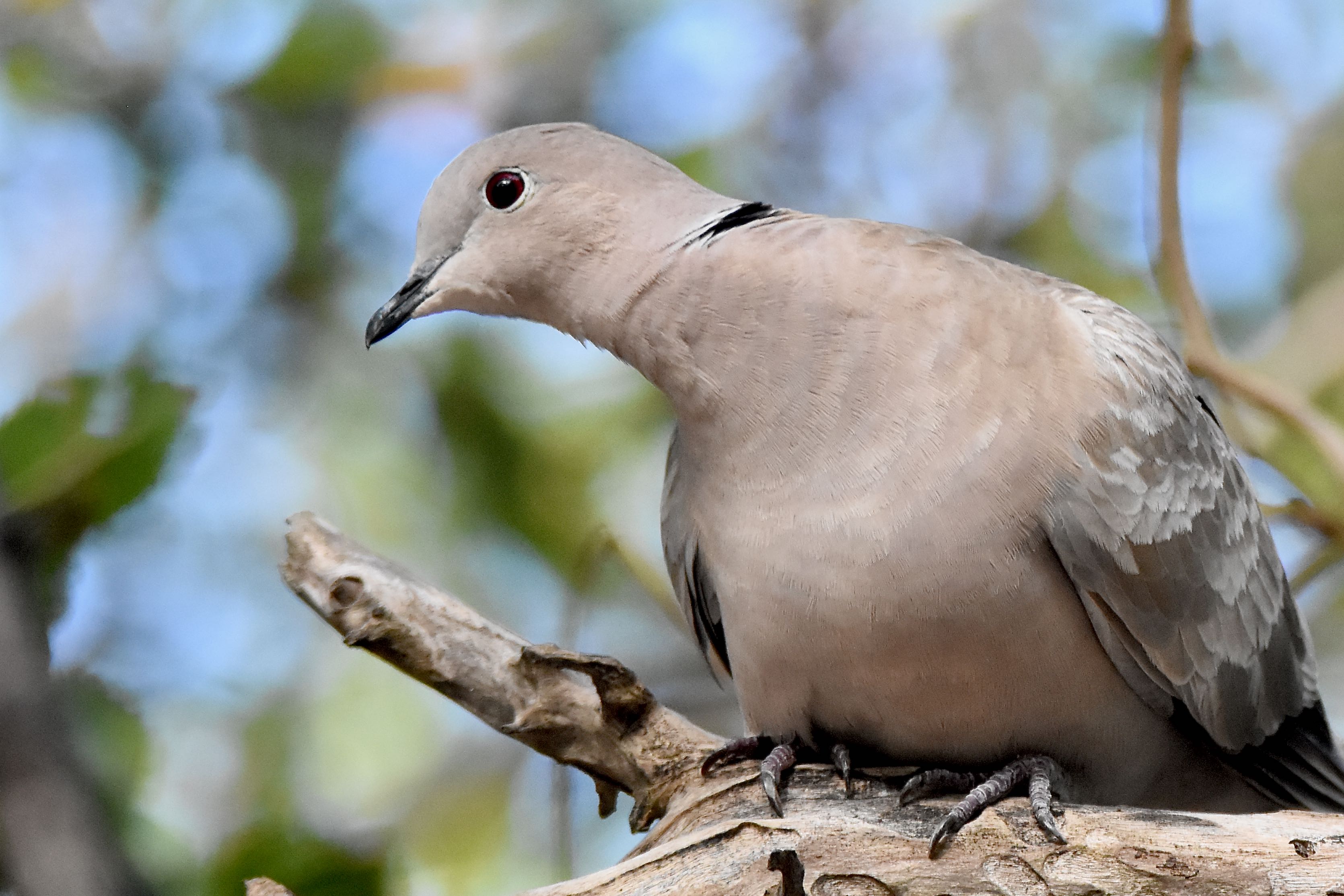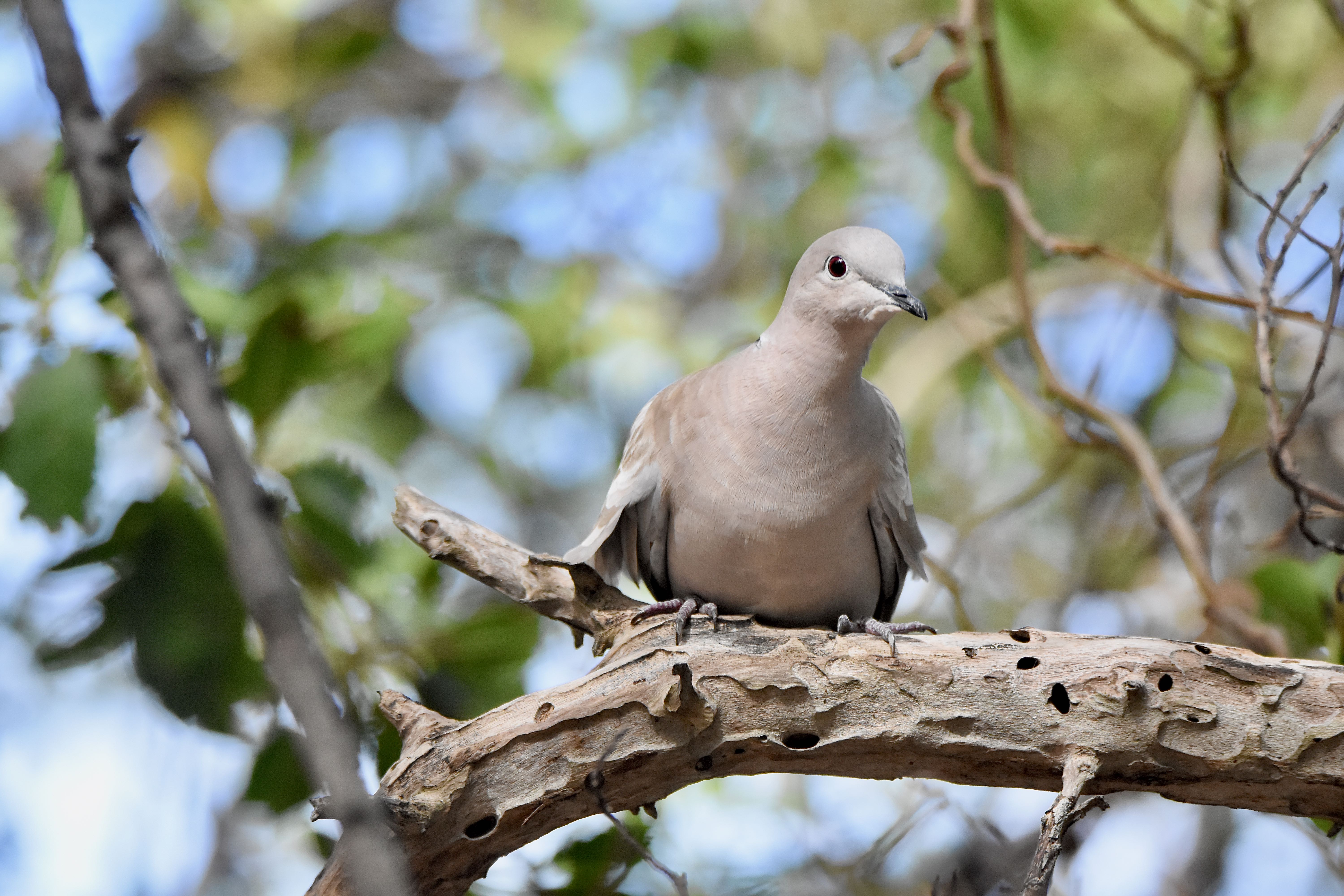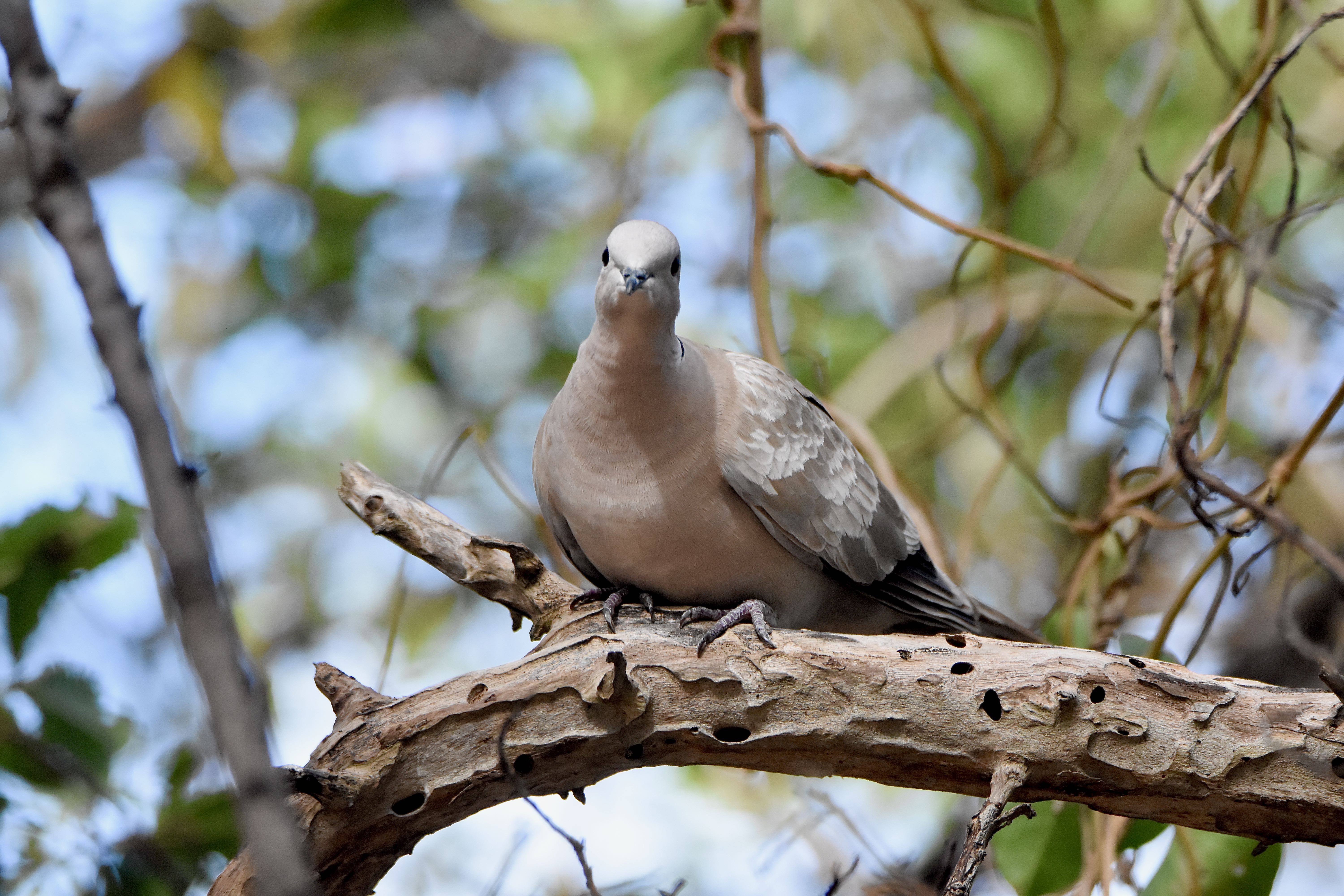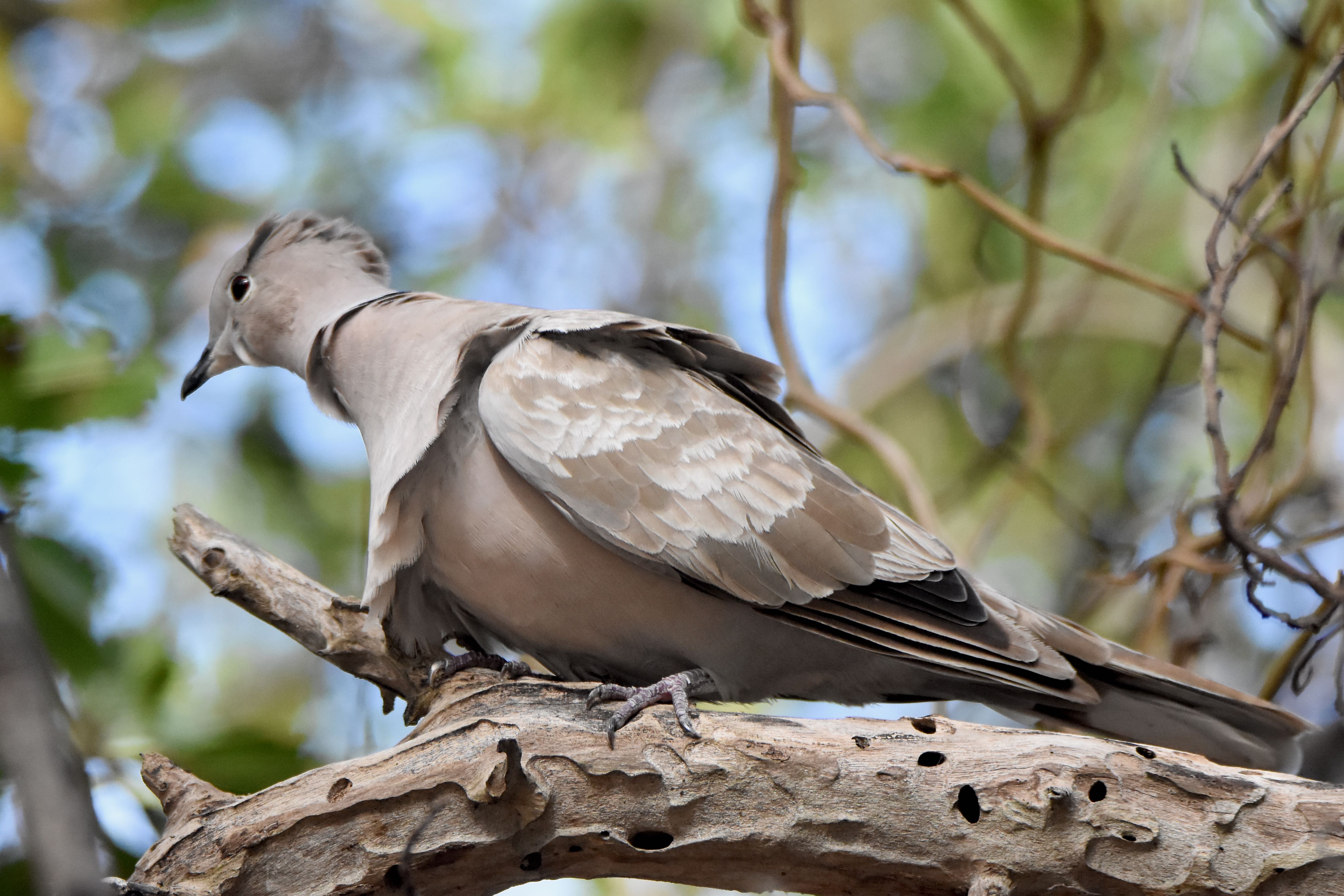
Eurasian Collared Dove, photographed at Garden Key, Dry Tortugas National Park, Monroe County, in April 2017.
The Eurasian collared dove, Streptopelia decaocto, roams much of North America because of a burglary in the Bahamas four decades ago. Strange but true.
According to Cornell University's Labratory of Ornithology, some thieves attempted to rob a pet store in New Providence, Bahamas, back in 1974. In the process, they accidentally released some of Eurasian collared doves, who quickly established a presence in the wilds of the archipelago. By 1980, the doves were calling Florida home. By the early 1990s, the Eurasian collared dove population was estimated at 100,000 individuals in Monroe and Miami-Dade counties alone. Since then, they've spread across most of the United States as far as the Pacific Northwest and into British Columbia.
Some have feared that their rapidly expanding presence would displace native dove populations, but there has been no evidence of that happening. In fact, if anything, just the opposite has occurred.
Eurasian collared doves are a mix of pale browns and grays. They're larger than mourning doves, with a body length of just under a foot, with a wingspan of about 14 inches. They have pointed wings and a squared off tail, which contrasts with the mourning dove's pointed tail. But the easiest "tell" that separates this dove from others is the so-called collar, a black band against a pale blue band that runs from one side of the neck, along the back, to the other side of the neck, collar-like. It lacks the baby-blue face markings of a mourning dove and the striking black and white wing bands of the white-winged dove. They're nonmigratory birds throughout their range. They're highly adaptable as far as habitat but tend to eschew extreme cold and deep forests. Some believe that's why collared doves haven't pushed into the northeastern U.S. They also tend to avoid big cities, preferring the 'burbs and small towns, living on the fringes of human society.
Eurasian collared doves originated in southern Asia. With the help of us humans, they're now found across the two continents from Japan to Portugal. According to the Florida Fish and Wildlife Conservation Commission, Eurasian collared doves have expanded their range through a jump-and-backfill style. Instead of gradually expanding their territory, the doves will establish a colony as much as several hundred miles from the nearest known population. Doves follow and take to the territory in between.
Their diet is mainly seeds. They take to feeders — which have helped fuel their rapid territorial expansion — farm fields and silos, any place where there's a ready supply of grain. They are ground foragers. They're tree nesters — the male gathers material like sticks, grasses and other vegetation, and the female fashions them into a platform-like nest over a period of one to three days. She'll lay one, or more likely, two eggs. Both parents will sit on the eggs, which require two to three weeks of incubation. Once hatched, both parents will feed their young a protein-rich substance called pigeon milk, which is produced in part of their esophagus called a crop. As the young grow, the parents will start feeding them seeds. First flight takes place at 17 days; they'll reach sexual maturity at a year.
Eurasian collared doves can have as many six broods in a year in warmer parts of their range, like Florida, fewer in colder places. A female might start building a second nest while still rearing a previous brood. Dove pairs are monogamous. In Florida, they breed throughout the year but most often between late winter and early fall.
Because they're exotics, Eurasian collared doves aren't protected by the Migratory Bird Treaty Act, and are often the targets of hunters. Hunting licenses aren't required and there are no bag limits. But woe unto those who, without a license or during the wrong time of the year, accidentally shoot a mourning dove instead. Mourning doves are protected unter the MBTA, and shooting one, accident or not, can put you afoul of the law. Big time.
Eurasian collared doves are members of Columidae, the family of pigeons and doves.
Click on photo for larger image
Links for Eurasian Collared Dove



